32d Air Operations Squadron
| 32d Air Operations Squadron | |
|---|---|
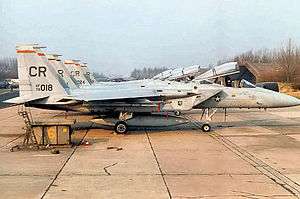 F-15 Eagles on the flight line at Soesterberg, about 1985 | |
| Active | 1940–1946; 1955–1994; 1994–2005 |
| Country |
|
| Branch |
|
| Role | Air Operations |
| Engagements | World War II |
| Decorations |
Presidential Unit Citation Air Force Outstanding Unit Award[1] |
| Insignia | |
| Patch with 32d Air Operations Squadron emblem (approved 2 August 1945)[2][note 1] |
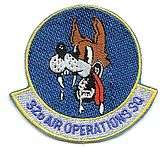 |
| Patch with 32d Tactical Fighter Squadron emblem[note 2] |
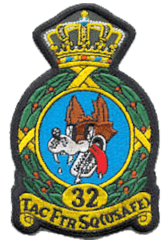 |
The 32d Air Operations Squadron is an inactive United States Air Force unit. Its last assignment was with 32d Air Operations Group, based at Ramstein Air Base, Germany. It was inactivated on 1 November 2005.
History
World War II

The US Army Air Corps constituted the 32d Pursuit Squadron (Interceptor). Seven weeks later, on 1 February 1940, the squadron activated at Kelly Field, Texas. After completing this training, in November 1940, the 32d transferred to Langley Field in Virginia to join the 36th Pursuit Group. Once there, the 36th equipped the squadron with Curtiss P-36A Hawk aircraft. During its stay at Langley, the 32d Pursuit Squadron flew a number of Curtiss YP-37 aircraft for a short period.[2]
Panama Canal Defense

On 6 January 1941, the squadron moved to Losey Field, on the island of Puerto Rico[2] as a reaction to the German presence in South America. By June the Squadron had a mix of Curtiss P-40 Warhawks and Bell P-39 Airacobras at Ponce Field, although several Curtiss P-36As had been briefly assigned earlier during its first days on Puerto Rico. This strength remained essentially unchanged up to 7 December 1941.
After the Pearl Harbor Attack, the Squadron dispatched a detachment to Arecibo Field, Puerto Rico. In early 1942, the German Navy began anti-shipping operations using U-Boats in the Caribbean. The subs sank several tankers in the harbor at San Nicholas, Aruba and even shelled an oil refinery on the island. The Squadron standardized on the P-39, and established detachments at Arecibo Field and Bourne Field, Saint Thomas, U.S. Virgin Islands. The Squadron moved entirely to Arecibo by 19 February.[2] Another detachment was established at Hato Field, Curaçao.[2] The mission was to provide air defense for the bomber and anti-submarine units that had been assembled there. The Puerto Rico-based elements of the Squadron went through a training program, which included maneuvers with Puerto Rican Infantry and Artillery units. Redesignated as the 32d Fighter Squadron on 15 May 1942, by the end of June the main body was still at Arecibo, although the detachments at St. Thomas and Hato Field continued.
The 32d Fighter Squadron had the responsibility for tracking down German U-Boat Wolfpacks. The Wolfpacks, three or more subs together in a mission known as search and destroy, this led to the famous name and insignia "Wolfhounds". In the fall of 1942, the Germans reduced their submarine activity in the Caribbean region to concentrate its activity on the North Atlantic convoy route and the approaches to northwest Africa. With the withdrawal of submarines from the Caribbean region the Antilles Air Task Force, which included the 32d, concentrated its efforts as a striking force on its primary function of guarding against possible attacks on the Panama Canal.
With the departure of its parent 36th Fighter Group to the United States in June 1943, the 32d remained in the Caribbean. On 3 August 1943, the squadron was transferred to the Antilles Air Command.[2] The Squadron was further assigned to the Trinidad Detachment and VI Fighter Command, Antilles Air Command. However, despite the assignment to Antilles Air Command, a detachment of the Squadron was noted at Howard Field in the Panama Canal Zone detached to XXVI Fighter Command. Effective 13 March 1944, the entire Squadron moved to France Field in the Panama Canal Zone[2] to replace the 52d Fighter Squadron. The squadron was placed under XXVI Fighter Command,[2] whose task was to defend the Panama Canal and to perform reconnaissance missions.
The unit moved from France Field to Howard Field between 7 and 10 January 1945,[2] where it was to replace the 43d Fighter Squadron and prepare for the transition to Lockheed P-38 Lightnings. On 1 February 1945, the unit was redesignated as the 32d Fighter Squadron, Twin Engine. However, no sooner had conversion to the P-38's been completed than the entire complement of P-38s was hangared and the unit activities ran down with the end of the war in Europe. The squadron ceased all flying activities in June, and the P-38s were stored in a hangar. By October 1945, the squadron was reduced to a non-operational administrative organization. Inactivated on 15 October 1946.[2]
Air defense in the Netherlands
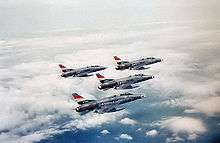
In 1954, the Netherlands government agreed, at the instigation of NATO, to accept the offer of the American government to deploy a squadron of American military planes. The task of the squadron would be to provide a contribution to Dutch air defense, within the context of NATO. The 512th Fighter Day Squadron, stationed at RAF Manston in Great Britain, was detailed by the Headquarters of the USAFE for transference to the Netherlands. Its new home base would be Soesterberg Air Base. The first group of American airmen, compromised quartermasters and air traffic controllers, arrived at Soesterberg on 6 October 1954.
In September 1955, the 512th moved to RAF Bentwaters, England without personnel or equipment. Its aircraft, personnel and equipment however stayed in the Netherlands and were assigned to the newly activated 32d Fighter Day Squadron. The squadron designation was chosen by the USAF in light of the World War II ties by the squadron to the defense of Dutch possessions in the Caribbean, giving the unit a historical link to the Netherlands. The 32d was assigned to the 36th Fighter-Day Wing at Bitburg Air Base in West Germany,[2] its historical parent unit at the time of its activation.
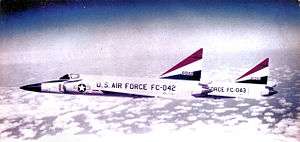
On 18 July 1958 the USAFE redesignated the unit as the 32d Tactical Fighter Squadron,[2] as part of the 36th Tactical Fighter Wing as a result of an Air Force–wide redesignation of tactical air units. In 1959, the 32d received the signature "Royal", the crown and wreath of the Dutch Royal Family (the House of Orange) were added to the emblem, giving it its unique look. This unique honor was granted in recognition of the unit's contribution to the defense of The Netherlands and graphically illustrates the 32d close ties with the Royal Netherlands Air Force. This designation was brief, however, and the squadron became the 32d Fighter-Interceptor Squadron a year later.
Tactical fighter operations

On 1 November 1968, the USAF transferred the 32d Fighter Interceptor Squadron to the command of Seventeenth Air Force stationed at Sembach Air Base, Germany. On 1 July 1969 the USAF redesignated the unit as the 32d Tactical Fighter Squadron and reequipped the squadron with the McDonnell-Douglas F-4 Phantom II. On 19 October 1977 the USAF decided that the 32d would receive the McDonnell-Douglas F-15 Eagle. In 1978 the Phantoms were flown to Ramstein Air Base in West Germany where they were assigned to the 86th Tactical Fighter Wing.
In 1989, the Dutch government allowed USAF to expand its headquarters unit at Soesterberg from squadron to group. The 32d Tactical Fighter Group was activated at Soesterberg on 16 November 1989 and took over functions of old 32d Squadron headquarters element and support flights (later squadrons) received support responsibilities.
During the 1991 Gulf War, after more than forty years, the Wolfhounds saw action again. Aircrew and ground support personnel were deployed, during the Operations DESERT SHIELD and DESERT STORM, August 1990 until March 1991, at Incirlik Air Base, Turkey. On 28 January 1991 one of the pilots killed an Iraqi MiG. After the War they continued their air activities in theatre as a part of Operation Provide Comfort from April 1991 until April 1993. Headquarters USAFE replaced the 32d Fighter Group on 1 July with the 632d Air Base Squadron; its duty was to complete the closure actions.
On 19 April the group furled its colors in formal ceremonies attended by members of the Royal family and the American ambassador. The 32d Group's subordinate units were inactivated on 1 July and the group on 1 October 1994.
Air operations unit
In the spring of 1994, USAFE received permission from HQ USAF to use the 32d designation for the new 32d Air Operations Group. The 32d Fighter Squadron was redesigned the 32d Air Operations Squadron on 1 August 1994 following their inactivation at Soesterberg Air Base in July. The squadron assigned to the 32d Air Operations Group, formerly the 32d Fighter Group, which was also redesigned on 1 August 1994. Both the group and the squadron were stationed at Kapaun Air Station, Germany, under the USAFE Theater Air and Space-operations Center. The 32d Air Operations Squadron was inactivated on 1 November 2005.
Lineage
- Constituted as the 32d Pursuit Squadron (Interceptor) on 22 December 1939
- Activated on 1 February 1940
- Redesignated 32d Fighter Squadron (Single Engine) on 15 May 1942
- Redesignated 32d Fighter Squadron, Single Engine on 1 February 1944
- Inactivated on 15 October 1946
- Redesignated 32d Fighter-Day Squadron on 9 May 1955
- Activated on 8 September 1955
- Redesignated: 32d Tactical Fighter Squadron on 8 July 1958
- Redesignated: 32d Fighter-Interceptor Squadron on 8 July 1959[3]<
- Redesignated: 32d Tactical Fighter Squadron on 1 July 1969
- Redesignated: 32d Fighter Squadron on 1 November 1991
- Inactivated 1 July 1994
- Redesignated 32d Air Operations Squadron 1 August 1994 and activated
- Inactivated 1 November 2005
Assignments
- 36th Pursuit Group (later 36th Fighter Group), 1 February 1940
- Antilles Air Command, 3 August 1943
- XXVI Fighter Command, 13 March 1944
- 6th Fighter Wing, 25 August-15 October 1946
- 36th Fighter-Day Group, 8 September 1955 (attached to 36th Fighter-Day Wing after October 1956)
- 36th Fighter-Day Wing (later 36th Tactical Fighter Wing), 8 December 1957
- 86th Fighter-Interceptor Wing (later 86th Air Division), 8 April 1960[3]
- Seventeenth Air Force, 1 November 1968
- 32d Tactical Fighter Group, 16 November 1989 – 1 July 1994
- 32d Air Operations Group, 1 August 1994 – 1 November 2005
Stations
- Kelly Field, Texas, i February 1940
- Brooks Field, Texas, 1 February 1940
- Langley Field, Virginia, 18 November 1940
- Losey Field, Puerto Rico, 6 January 1941
- Detachment operated from Arecibo Field, Puerto Rico, 11 December 1941 – 19 February 1942
- Arecibo Field, Puerto Rico, 19 February 1942
- Hato Field, Curaçao, Netherlands West Indies, 9 March 1943
- Detachment operated from: Dakota Field, Aruba, Netherlands West Indies, 9 March 1943 - March 1944
- Detachment operated from: Losey Field, Puerto Rico, 9 March-4 June 1943
- France Field, Panama Canal Zone, 13 March 1944
- Howard Field, Panama Canal Zone, 10 January 1945 – 15 October 1946
- Soesterberg Air Base, Netherlands, 8 September 1955[3] – 1 July 1994
- Kapaun Air Station, Germany, 1 July 1994 – 1 November 2005
Aircraft
- Curtiss YP-37 Hawk, 1940
- Curtiss P-36 Hawk, 1940–1943
- Curtiss P-40 Warhawk 1942–1944
- Bell P-39 Airacobra, 1942–1945
- Lockheed P-38 Lightning. 1945–1946
- Republic P-47 Thunderbolt, 1946
- North American F-86 Sabre, 1955–1956
- North American F-100 Super Sabre, 1956–1960
- Convair F-102 Delta Dagger, 1960–1969[3]
- McDonnell F-4 Phantom II, 1969–1978
- McDonnell Douglas F-15 Eagle, 1978–1994
References
- Notes
- ↑ Heraldry: On a light turquoise blue disc, border light yellow orange, edged black, a caricatured, brown and white wolf's head, with mouth open and fangs bared, dripping saliva, proper, white facing to the dexter.
- ↑ During the time the squadron was stationed in the Netherlands, it adopted the wreath used by squadrons of the Royal Netherlands Air Force as part of its emblem.
- Citations
Bibliography
![]()
- Hagdedorn, Dan (1995). Alae Supra Canalem: Wings Over the Canal. Nashville, TN: Turner Publishing. ISBN 1-56311-153-5.
- Maurer, Maurer, ed. (1983) [1961]. Air Force Combat Units of World War II (PDF) (reprint ed.). Washington, DC: Office of Air Force History. ISBN 0-912799-02-1. LCCN 61060979. Retrieved December 17, 2016.
- Maurer, Maurer, ed. (1982) [1969]. Combat Squadrons of the Air Force, World War II (PDF) (reprint ed.). Washington, DC: Office of Air Force History. ISBN 0-405-12194-6. LCCN 70605402. OCLC 72556. Retrieved December 17, 2016.
- Ravenstein, Charles A. (1984). Air Force Combat Wings, Lineage & Honors Histories 1947-1977 (PDF). Washington, DC: Office of Air Force History. ISBN 0-912799-12-9. Retrieved December 17, 2016.
External links
- The Wolfhounds Web-site: http://wolfhoundsusaf.com/
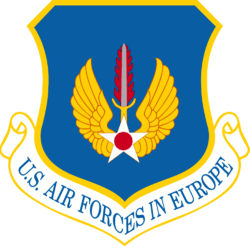
.png)
.jpg)